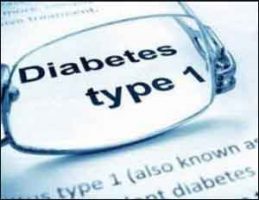- Home
- Editorial
- News
- Practice Guidelines
- Anesthesiology Guidelines
- Cancer Guidelines
- Cardiac Sciences Guidelines
- Critical Care Guidelines
- Dentistry Guidelines
- Dermatology Guidelines
- Diabetes and Endo Guidelines
- Diagnostics Guidelines
- ENT Guidelines
- Featured Practice Guidelines
- Gastroenterology Guidelines
- Geriatrics Guidelines
- Medicine Guidelines
- Nephrology Guidelines
- Neurosciences Guidelines
- Obs and Gynae Guidelines
- Ophthalmology Guidelines
- Orthopaedics Guidelines
- Paediatrics Guidelines
- Psychiatry Guidelines
- Pulmonology Guidelines
- Radiology Guidelines
- Surgery Guidelines
- Urology Guidelines
Women with T1 Diabetes and diabetic nephropathy at increased risk of CVD than men

The absolute cardiovascular disease (CVD) risk is equal in both men and women with type 1 diabetes (T1D), whereas excess CVD risk is many folds increased in women, taking diabetic nephropathy (DN) into account. These are the findings of a study published in the journal Diabetes, Obesity and Metabolism.
The researchers further find that even normoalbuminuric patients with normal kidney function show an excess CVD risk compared to non‐diabetic control individuals.
In order to be able to distinguish patients with type 1 diabetes (T1D) with different cardiovascular risk profiles, Per‐Henrik Groop, Folkhälsan Institute of Genetics, Folkhälsan Research CenterHelsinki, Finland, and colleagues conducted the study to dissect the effect of different stages of DN and sex on the excess and absolute morbidity of coronary artery disease (CAD) and stroke in T1D.
The study involved analysis of 4,410 patients with T1D from the Finnish Diabetic Nephropathy Study (FinnDiane) and 12,434 non‐diabetic control individuals. CVD events were identified from the Finnish nationwide health registries. Cumulative incidences for CAD and stroke were calculated and standardized incidence ratios (SIRs) were estimated between patients with T1D and non‐diabetic control individuals stratified by DN status and sex.
Read Also: New test can predict onset of kidney damage caused by diabetes
Key Findings:
- There were 487 incident CADs and 290 strokes at the end of 2014 (median follow‐up 12.9 years).
- Cumulative incidences of CAD and stroke were similar in men and women within different nephropathy groups.
- SIR for CAD was 7.5 (95% CI; 6.9‐8.2). It was 17.2 (14.9‐19.5) in women and 5.3 (4.7‐5.9) in men.
- The women‐to‐men ratio of SIR (SIRr) increased by nephropathy group; 3.3, 3.7, 5.3 and 6.8 in the normo‐, micro-and macroalbuminuria and end‐stage renal disease (ESRD) group, respectively.
- SIR for stroke was 5.0 (4.3‐5.5), similar in men and women. SIRr for stroke was 0.8, 1.3, 1.6 and 1.7, in the normo‐, micro-and macroalbuminuria and ESRD group, respectively.
- SIR in normoalbuminuric patients with eGFR ml/min/1.73 m2 ≥90 was 3.5 (2.5‐4.5) for CAD and 1.6 (1.0‐2.3) for stroke.
"Although the excess CVD risk is several folds increased in women compared to men, the absolute CVD risk in men and women is equal, when nephropathy is taken into account. Even normoalbuminuric patients with normal kidney function show an excess CVD risk compared to non‐diabetic control individuals." concluded the authors.
For more information log on to https://doi.org/10.1111/dom.13456

Disclaimer: This site is primarily intended for healthcare professionals. Any content/information on this website does not replace the advice of medical and/or health professionals and should not be construed as medical/diagnostic advice/endorsement or prescription. Use of this site is subject to our terms of use, privacy policy, advertisement policy. © 2020 Minerva Medical Treatment Pvt Ltd